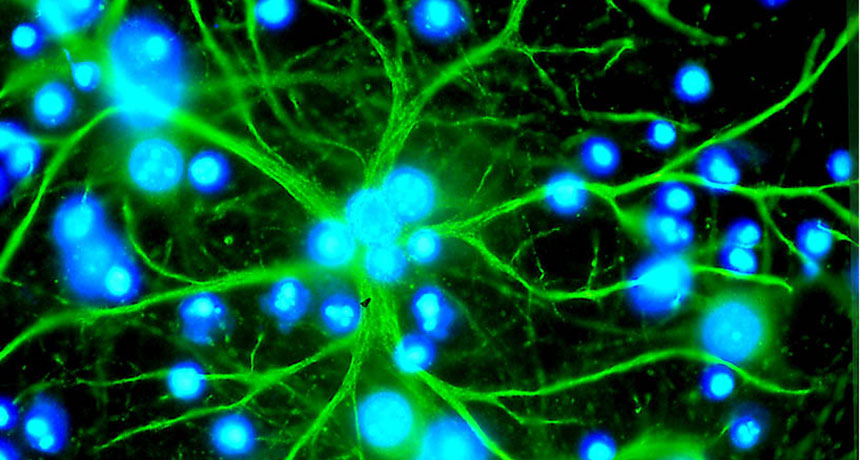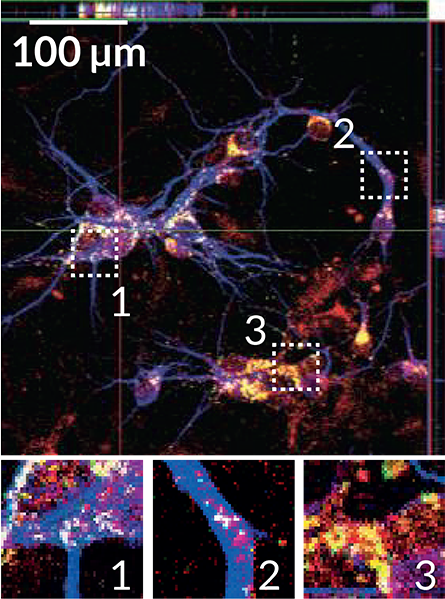Gift-giving brain cells are lifeline to injured nerve cells
Astrocytes share energy-making mitochondria with neural neighbors

GIFT GIVER Star-shaped astrocytes (green) may donate mitochondria to nerve cells in distress, helping the brain escape damage from stroke and possibly other maladies, a new study suggests.
Lka/Wikimedia Commons (CC BY-SA 3.0)







